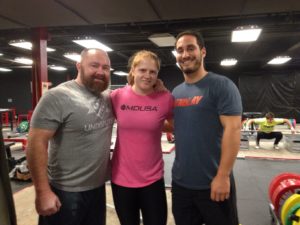The human body is built to pull, push, lift, squat and carry. Healthy, pain free activity implies harmony among these movements. Simple ratios allow us to quantify where we are strong and where we are weak. If we repeatedly stress our bodies more with our strengths than with our weaknesses we are less likely to recover and more likely to feel aches and pains.
How do we know if our aches and pains arise from activity that was once strong and overstressed, or from activity that was ignored and under stressed? If your knees hurt, do you need more squatting or less squatting? If your shoulder hurts, do you need more pushing or pulling and in what direction? If your back hurts, do you need more lifting or less lifting?
I have devised a basic guideline to better understand the relationships among major exercises, which can be used to determine whether or not you need more or less of a particular piece. These relationships have been studied by elite weightlifters, power lifters and strongmen and have been refined and expanded upon by my mentor, Chiropractor Dr. Corey Duvall of the Stay Active Clinic in Asheville, North Carolina. There are many more exercises than just the ones that I’ll mention, so you can think of this as the first layer of the onion.
I recommend that you categorize a week of your own training into “pull”, “push”, “lift”, “squat” and “carry”. If the frequency of your training surrounds stronger exercises then I encourage you to challenge weaker ones. This will refine your strengths, limit plateaus, and prevent/reduce chronic pain. The goal is not to be perfectly balanced; instead, the goal is to trend in a more balanced direction over time.
Balance Guidelines
1) Back Squat vs. Deadlift
The Back Squat should be ~25% less than the traditional Deadlift. The traditional Deadlift has the same capabilities as the Sumo Deadlift.
2) Supinated Chest to Bar Pull Up vs. Dip (Downward Pull vs. Downward Push)
Why Chest to Bar vs. Chin Up? At the top of the Chest to Bar Pull Up, the musculature that rotates the shoulder blade downward fully shortens and the musculature that rotates the shoulder blade upward fully lengthens. This is a fuller range of motion than experienced in a Chin up. Chest to Bar Pull Ups should be balanced with Dips. If bodyweight Chest to Bar Pull Ups or Dips have not been obtained, train with assistance on a Graviton. Unlike using bands, the assistance used on the Graviton is easily measurable. Your bodyweight minus the assistance equals your new weight.
3) Supinated Chest to Bar Pull Up & Dip vs. Deadlift
For every Chest to Bar Pull Up or Dip, there is potential for a double bodyweight Deadlift.
4) Chest to Bar Pull Up & Dip vs. Overhead Squat and Farmer Carry
For every Chest to Bar Pull Up or Dip, there is potential for a bodyweight Overhead Squat and bodyweight Farmer Carry for 10 meters (1 rep=10 meters).
5) Upward Push vs. Upward Pull
A BTN Press should be balanced, in weight and repetitions, with a Narrow Grip High Pull. This demonstrates balance between the internal and external rotators of the shoulder. The BTN Press puts the external rotators of the shoulder in a shortened position and the internal rotators in a long position, the NG High Pull does the opposite. These two exercises have the potential to be 45% of the Back Squat. The same balance exists unilaterally, between 1-arm DB press and 1-arm DB High Pull but at 20% of the Back Squat
* Below is the résumé of an ideally balanced 150lb person with 5 Supinated C2B Pull Ups and Dips (this rep range is arbitrary and could have ranged from reps 1-20):
Pull:
Downward=C2B Pull Ups: 150# x 5
Upward=NG High Pull: 100# x 5
Push:
Downward=Dips: 150# x 5
Upward=BTN Press: 100# x 5
Lift:
Deadlift/Sumo Deadlift: 300# x 5
Squat
Back Squat: 225# x 5
Overhead Squat: 150# x 5
Carry
Farmer Carry: 300# (150#/side) x 50 meters
Zachary Greenwald
MDUSA Corrective Exercise Specialist
Don’t miss the Mash Mafia Dec. 20th Weightlifting Competition! Come celebrate the holidays at the Mash Compound with some bar slams and coffee! Click on the link below for information:
Jingle Bars Weightlifting Meet at the Mash Compound!
Also check out the first Learn 2 Lift of the Year right here at the Mash Compound January 10th and 11th. Weightlifting and Powerlifting taught by Coach Mash and the Mash Crew! Click below for more information:
